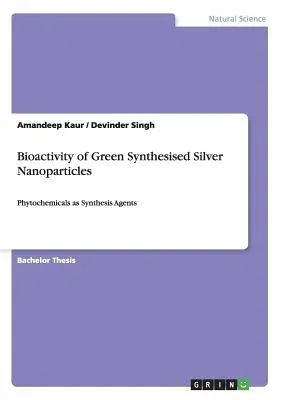Bachelor Thesis from the year 2013 in the subject Biology -
Miscellaneous, grade: M.Sc., course: Biotechnology, language: English,
abstract: Research and analysis of nanoparticles (NPs) synthesis and
their biological activities has been expanded significantly in the
recent years. The agents used for nanoparticles (NPs) synthesis are of
organic (mainly carbon) and inorganic (metal ions like silver and gold)
origin (Singh et al., 2010). Among these, silver (Ag) is the most
preferred NPs synthesis agent due to its reported use in medical field
as best topical bactericides from ancient times (Lavanya et al., 2013).
The stable silver nanoparticles had been synthesized by using soluble
starch as both the reducing and stabilizing agents (Shrivastava et al.,
2012). So the concern of scientific community shifted towards
ecofriendly, natural and cheaper method of NPs synthesis by using
microorganisms and plant extracts (Mohanpuria et al., 2008). The use of
plant materials for silver nanoparticles (AgNPs) is most popular due to
its potential biological activities, easy availability and faster rate
of synthesis there by cutting the cost of NP's synthesis (Huang et al.,
2007 and Salam et al., 2012). The nanoparticles had been clinically used
for infection, vaccines and renal diseases (Malhotra et al., 2010). The
plant extract of petals of herbal species like Punica granatum, Datura
metel (Chandran et al., 2011) and stem extracts of Svensonia
hyderobadensis (Linga et al., 2011) had been effectively used for AgNPs
synthesis and investigated for their antimicrobial activities.
Nanoparticles could be synthesized by various approaches like
photochemical reactions in reverse micelles (Taleb et al., 1997),
thermal decomposition (Esumi et al., 1990), sonochemical (Zhu et al.,
2000) and microwave assisted process (Santosh et al., 2002 and Prasher
et al., 2009). Nanocrystalline silver particles have found tremendous
applications in the field of high sensitivity biomolecular detection an


